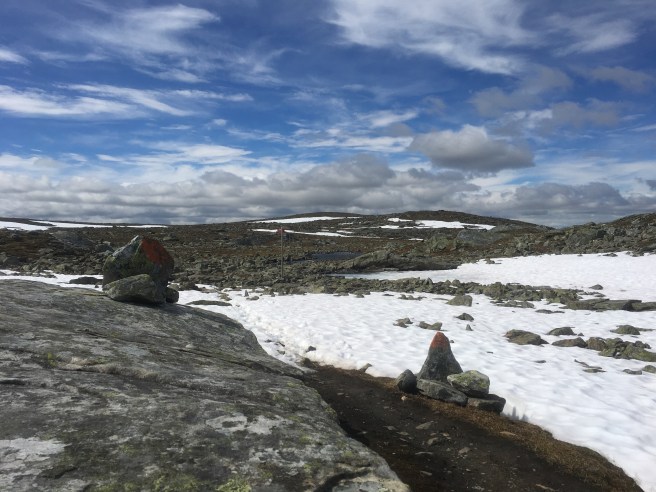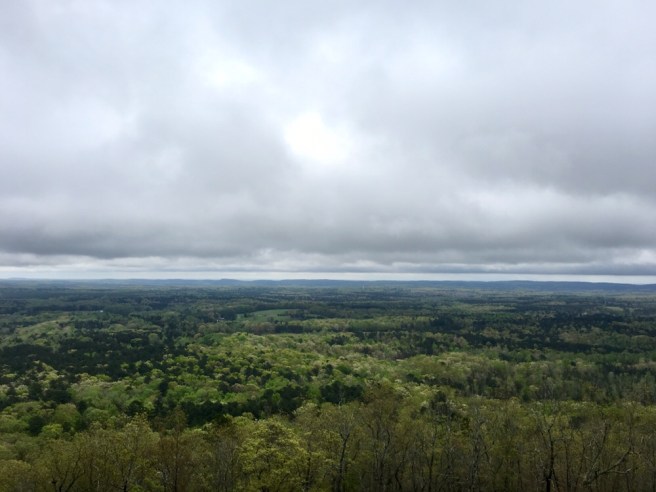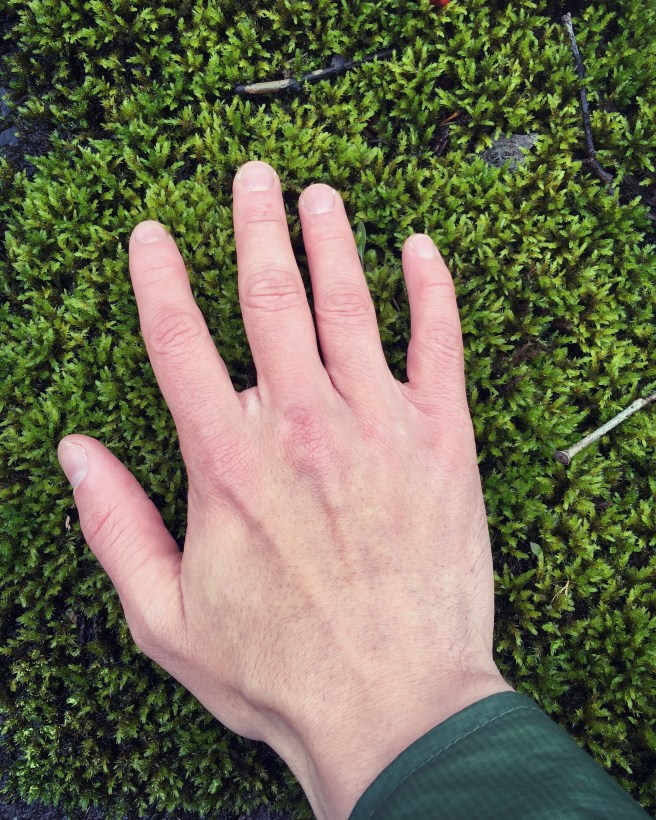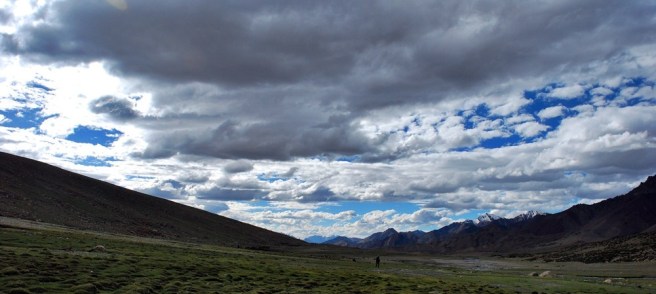
Back in July 2017, I spent a couple weeks hiking Kungsleden, a 270-mile trail in northern Sweden. I started at Hemavan and walked ~215ish miles north up to Saltoluokta, with time constraints keeping me away from the last chunk.

Researching the trail was a bit challenging. While there was a lot of content on general trekking approaches, I didn’t find a lot oriented toward the more ultralight/lightweight approach I prefer. There wasn’t a ton of information in English, either. And because I do almost all of my hiking in the southern U.S., it was a little difficult to translate my own experience into what I would need to have a good time in a far different environment. So here I’ll jot down the gear and resources I used, in hopes it will help the next person along. (I meant to write this sooner, but… 🤷♂️).
Timing and Conditions

I hiked from July 3 to 17. It was a higher snow year (I am told), and my start date was a few weeks earlier than peak season begins. When I began there was still snow lingering on many portions of the trail. Snow crossings happened on most days, but none of it was particularly difficult. It was rare to see patches longer than 100 meters or so, none of it was very steeply sloped, and I had only a bit of post-holing here and there. There was quite a lot of water on the trail – creek crossings, snowmelt, boggy sections, etc., so keeping feet dry was just about impossible.

Temperatures ranged from high 30s on the coldest mornings, in the 40s and 50s on most days, with sunnier ones briefly in the upper 70s or low 80s. I was lucky to only have heavy rain on a couple of days. Those were pretty miserable, and just about perfect for hypothermia. Just about every day had some strong winds at some point. Walking from the south to the north kept the prevailing winds at my back, and I’d highly recommend a northbound hike for just that reason.

The hut system is very nice, and I took advantage of it here and there.. Most have bunks, gas stoves, etc.. The best part is many have little shops with enough food to buy for the next few days. There isn’t a ton of variety, but if you’re hiking at a fair pace, you don’t really need to carry more than 2-3 days of food and a few bites to fill in the cracks.

On to the gear.
Kungsleden Gear List
Clothing
| Item | Rationale | Retrospective |
| Goodhew merino-alpaca quarter crew socks | Durable, warm | As expected, lots of miles left on these. Seemed to hold on to mud more than other merino socks I’ve used – side effect of long-hair alpaca, perhaps? I only used one pair for hiking, the other reserved for nighttime toastiness. |
| Adidas Traxion trailrunners | Light, flexible; Deep cleats for mud and gravel; mesh for easy drainage | Great choice. Feet wet every single day but shoes never waterlogged too long. |
| Swrve slim pants | Cut for city cycling = deep pockets; no extra fabric to flap in wind, puddle at ankles, soak up water; don’t like zipoffs or cargo pockets; polyester more stretchy and comfy in rain and in bed | Perfect choice, very happy |
| Lightweight merino long-sleeve shirt | Comfy when damp; thinner for quicker drying; no stink | Rarely to worn alone; usually needed additional layers for bugs, cold |
| Prana polyester long-sleeve quarter-zip hoody | Easy temp adjustment; love the thumb loops | Worn daily over the merino, usually all day. Hood very useful for light bug pressure when headnet too hot/fussy. (Interested to try a midweight merino with synthetic button-up?) |
| Under Armor spandex boxer-briefs | No stretching, bunching, chafing, smell | Perfect choice |
| Patagonia R1 hoody | Warmth when active; deep venting; thumb loops! | Hood is still a little tight and short for my long neck :( |
| Polyester balaclava | Adjustable warmth when not wearing R1 | Kept my cap from blowing off across the moors; lifesaver for nose/mouth when cold, dry air started to affect my lungs |
| Topo Designs camp hat | Woven better than mesh for wet/wind; broad, flat brim helps when wearing glasses in rain | Perfect choice |
| Casio digital watch | Slim, inexpensive, water resistant; tells time | Never took it off |
| Generic fleece gloves | Warmish | Perfect for small temperature adjustments. Worn daily. Not great in rain, but jacket sleeves helped. These things are… 15 years old? |
| Rab Kinetic rain jacket | Light; long sleeves cover hands; great hood | It worked great, but maybe a liiiiiiittle too light. A few more days with heavier rain would change my calculus here. |
| Sierra Designs rain pants | Inexpensive, durable | Light enough, sufficiently windproof; not going to spend much on something with limited performance requirements that gets heavy wear |
| Marmot Ion windshirt | Helps with insects + cold, wind when active | Absolutely perfect… for only one single day (cold, windy, alternating snowfall and sun). Otherwise, easily replaced by rain jacket. |
| Mountain Hardwear Thermostatic insulated jacket | Nuclear option, just in case | Mostly used as pillow. Could be replaced with 8-10oz vest, perhaps. |
| New Balance running tights | Night-time layer if everything is drenched | Never needed |
| ULA Circuit backpack | More durable as luggage than my lighter packs | Worked perfectly; love the hip pockets |
| Tarptent Moment tent | Not bringing trekking poles; sets up easily | Loved all the mesh for views and bugs; managed well in heavy winds |
| Western Mountaineering Ultralite 20º sleeping bag | Only other option was summerweight bag | A little bit overkill, but no complaints |
| Supercat alcohol stove | Inexpensive, fuel everywhere, easier to fly with | Would bring again |
| Evernew .9L Ti pot | Trusty ol’ standby | |
| 20oz bike water bottle | Water everywhere, don’t need a lot while moving | Also very useful for drink mixes and steeping lots of tea at end of day |
| Platypus 2L water bottle | Camp convenience | |
| DEET | Mosquitos waking up… | Essential for middle stretch – boggier, lower-elevation campsites |
(Not listed are the usual essentials and conveniences – sunglasses, first aid kit, chapstick, nail clippers, small light, journaling stuff, maps, etc.)
Helpful Links and Resources

I got a lot out of Danielle and Wayne Fenton’s Kungsleden journal, and found their book quite useful as well. The photos were super helpful for understanding terrain and weather and such. Ditto for Distant North and Aaron Teoh‘s pages. (That said, there’s a fine line where you can read and see too much ahead of time…). Over on BackpackingLight.com, the trip reports from Kristin Gates‘ and Jörgen Johansson’s trips in Alaska were useful for rounding out Arctic travel knowledge, as were as various forum posts. The Swedish Mountain Maps app was really useful for daydreaming in advance, and the occasional peek at the terrain. The STF Kungsleden Facebook page is good for the on-the-ground trail conditions in the days leading up to the hike. The Calazo maps are really good, and I was glad I had them along.
And there you have it. Enjoy your hike.


























